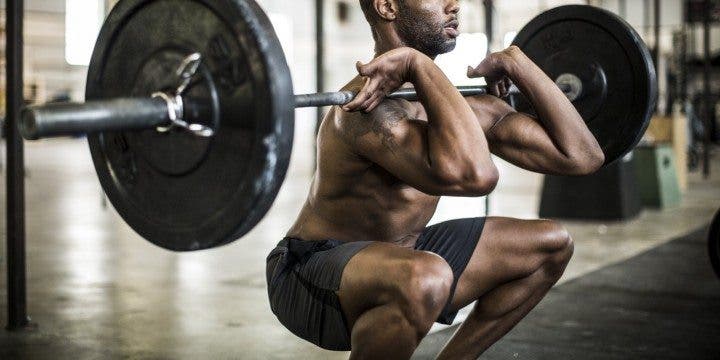The squat is the best movement to work the lower body. This exercise involves a great demand for energy , making it ideal for the muscle definition stage. However, this exercise also has a high involvement in terms of muscle groups (the entire lower body, the abdomen, and to a lesser extent the back and shoulders) that is why it is also a highly recommended exercise for the volume stage.
However, many people are unaware of how far they should go down when squatting. We will try to resolve that issue below.
How far should you squat down?
This matter is not very mysterious; It is obvious that if the range of movement we perform is greater, the amount of muscle fibers involved will also be greater, and with it, the amount of calories that we will invest and burn.
On the other hand, it is also obvious that if we extend the movement too long, we can fall as we would lose our balance. For this reason, the optimal range of motion means that, viewed in profile, the gluteus is below the knee and the navel is also slightly below the knee.
Is the deep squat harmful?
The belief that squatting excessively deep could damage the knees had generally been adopted, and this couldn’t be further from the truth. In fact, deep squats are capable of improving knee stability. This is because the more we bend the knee (that is, the lower we squat), the less pressure there will be within the ligaments that make up the knee, so this will be a way for our joint to become even stronger. .
What’s more, research shows that strength is increased more through low-weight deep squats than squats with a shorter range of motion but much higher weight, so there is no excuse for shortening the movement.

Conclution
The deep squat is an exercise of great complexity and muscular involvement, so its technique requires great care and attention. Nor can we jump into the pool with a weight that is excessive since this will only do for us is cause an injury.
It is also convenient (as with the rest of the exercises) to perform dynamic stretching and a proper warm-up before starting to perform deep squats, so that we promote blood flow to the lower extremities.
Also, good nutrition is crucial. We have to focus on fats if the rep ranges are high (around 15), or on carbohydrates if the ranges are lower but the intensity is higher.
Finally, we must remember not to go down more than necessary, since if we do so more than is desirable, our center of gravity would shift and this would potentially increase the risk of falling.
References
- Nick English, Get Low: Deep Squats Are the Best Squats , for Greatist [Revised October 2015]
